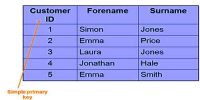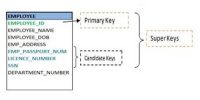A database is a collection of integrated data organized as bytes, fields, records, and files. A database Management system is a computer-based system for defining, creating, manipulating, controlling, managing and using databases. DBMS provides:
- Improved data integrity
- Independence
- Reduced data redundancy.
Structured Query Language (SQL)
There are a number of database query languages in use, either commercially or experimentally. SQL however, is the most widely used among these languages. It is a standard computer language for relational database management and data manipulation. SQL is the most influential commercially marketed query language. SQL uses a combination of relational-algebra and relational-calculus construct. This is not joisted query language; it can define the structure of the data, modify data in the database and specify security constraints. SQL has become the standard relational database language.
The SQL language has several parts:
Data Definition-Language (DDL): The SQL DDL provides commands for defining relation schemas, deleting relation schemas, modifying relation-schemas and creating tables.
Data Manipulation Language (DML): The SQL DML, includes commands to insert into, delete entities from and modify (update) entities in the database.
Advantages −
- Allows users to access, describe and manipulate data in the relational database management systems.
- Allows embedding within other languages using SQL modules, libraries & pre-compilers.
- Allows users to create a view, stored procedure, functions in a database.
- Allows users to set permissions on tables, procedures, and views.















